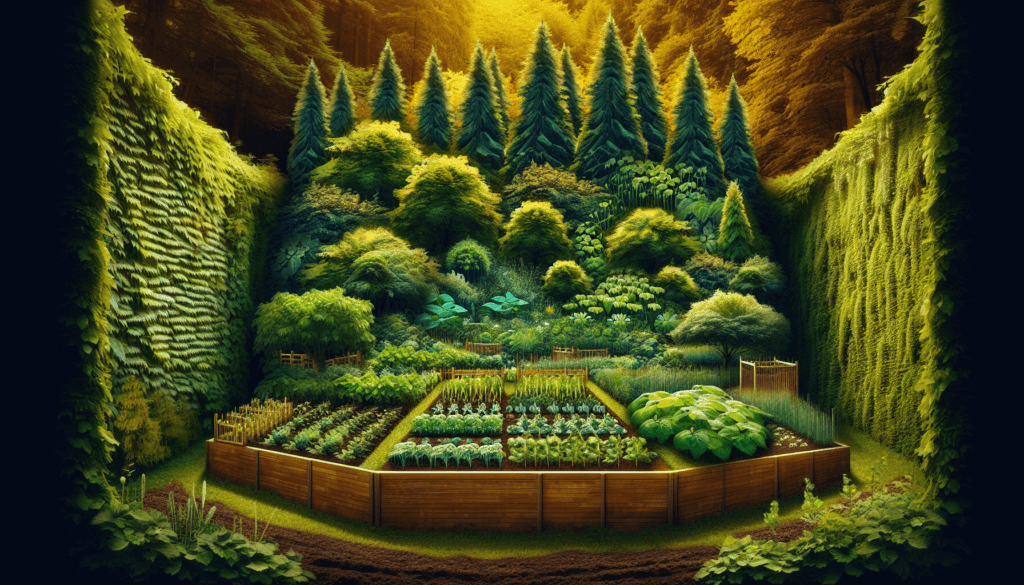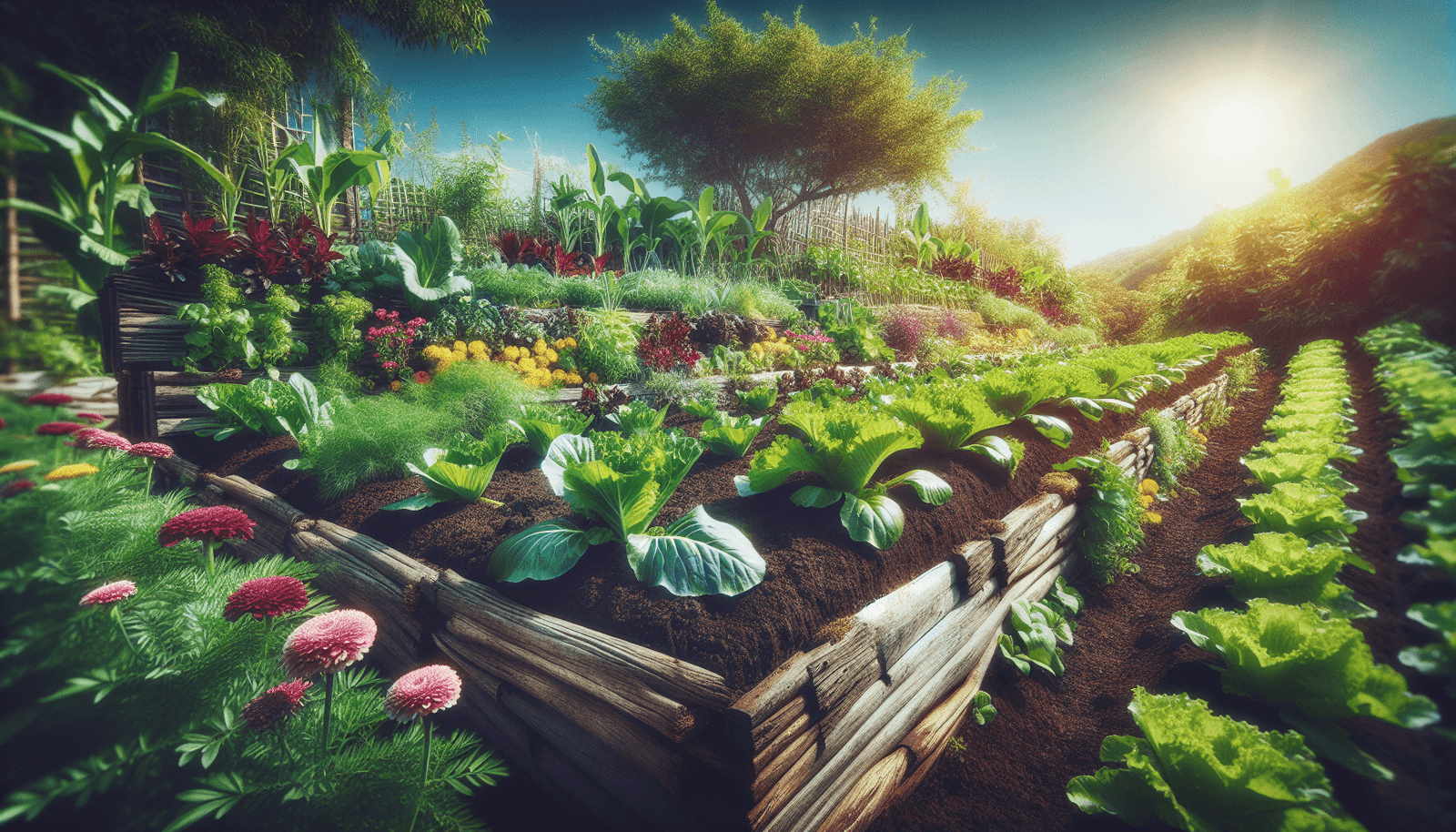So you’ve been diligently working on cultivating your garden, carefully selecting the perfect plants and nurturing them to their fullest potential. But have you ever considered the impact of soil erosion on your beloved garden? Soil erosion can cause significant damage, leading to a loss of nutrients, slower plant growth, and even the washing away of your carefully planted seeds. But fear not! In this article, we will explore some of the best ways to prevent soil erosion in your garden, allowing you to protect your precious plants and maintain a vibrant and healthy outdoor sanctuary.
Choose suitable plants
Plant ground cover
When choosing plants for your garden, it is essential to consider those that can act as ground cover. Ground cover plants play a crucial role in preventing soil erosion by holding the soil in place and reducing the impact of heavy rain or strong winds. Popular options for ground cover plants include creeping thyme, creeping juniper, and English ivy. These plants not only create a protective layer over the soil but also add aesthetic value to your garden.
Use deep-rooted plants
Another effective way to prevent soil erosion in your garden is by incorporating deep-rooted plants. Deep-rooted plants, as the name suggests, have roots that extend deeper into the soil, enabling them to hold the soil in place more effectively. Trees such as oak, pine, and maple are excellent choices for deep-rooted plants. By planting these trees, you can significantly reduce the risk of soil erosion, especially in areas prone to strong wind or heavy rain.
Rotate crops
Rotating crops is not only beneficial for maintaining soil fertility but can also help prevent soil erosion. When you cultivate the same crop in the same area year after year, it can lead to a depletion in nutrients, making the soil more susceptible to erosion. By rotating your crops, you can distribute the nutrient demands more evenly and minimize erosion risks. Additionally, different crops have varying root structures, some of which can help hold the soil together, further preventing erosion.
Avoid overgrazing
If you have livestock grazing in your garden or on nearby land, it’s essential to ensure that overgrazing does not occur. Overgrazing can strip the vegetation from the soil surface, leaving it exposed and vulnerable to erosion. It is crucial to monitor the grazing intensity and move animals to different areas regularly to allow for vegetation regrowth. Proper management of grazing practices will help maintain a healthy ground cover that protects against soil erosion.
Plant on slopes
Sloping terrain can be particularly vulnerable to soil erosion due to the gravitational pull on water and the increased likelihood of runoff. When planting on slopes, it is crucial to choose suitable plants that can stabilize the soil effectively. Consider planting grasses or ground cover plants with extensive root systems, as they can anchor the soil and reduce erosion risks. Additionally, creating terraces or retaining walls can help control water flow and prevent erosion on sloped areas.
Implement proper water management
Install a drip irrigation system
One of the best ways to manage water effectively and prevent soil erosion is to install a drip irrigation system. Unlike traditional sprinklers, drip irrigation delivers water directly to the roots of plants, minimizing water runoff and reducing the chances of erosion. This method also promotes water efficiency by minimizing evaporation and ensuring that plants receive the necessary moisture without wasting water.
Mulch the soil
Applying mulch to the soil is an excellent technique for managing water and preventing erosion. Mulch acts as a protective layer, reducing water runoff and soil compaction caused by heavy rain or irrigation. It helps retain moisture, reduces evaporation, and regulates soil temperature. Choose organic mulch options like wood chips, straw, or shredded bark, as they not only prevent erosion but also enrich the soil over time as they decompose.
Water in stages
When watering your garden, it’s important to avoid applying water too quickly or in excessive amounts, as it can lead to runoff and erosion. Instead, water in stages, allowing the soil to absorb the moisture gradually. This method promotes deep penetration of water into the soil, helping the roots to grow deeper and reducing the risk of erosion. Additionally, watering in stages ensures that water is effectively utilized by plants, reducing wastage and promoting overall water efficiency.
Collect rainwater
Rainwater harvesting is an excellent sustainable practice that can help prevent soil erosion and conserve water. By installing rain barrels or a rainwater collection system, you can collect and store rainwater for later use in your garden. This not only reduces your reliance on municipal water sources but also ensures a controlled water supply without excessive runoff. Redirecting rainwater to areas in need of additional irrigation can further minimize erosion risks.
Build swales and berms
Swales and berms are effective water management techniques that can help prevent soil erosion in your garden. Swales are shallow channels designed to redirect surface water, while berms are raised mounds created to contain and slow water flow. By strategically placing swales and berms around your garden, you can control the movement of water, allowing it to infiltrate the soil rather than causing erosion. These techniques are particularly useful in sloping areas as they help retain water and distribute it more evenly.
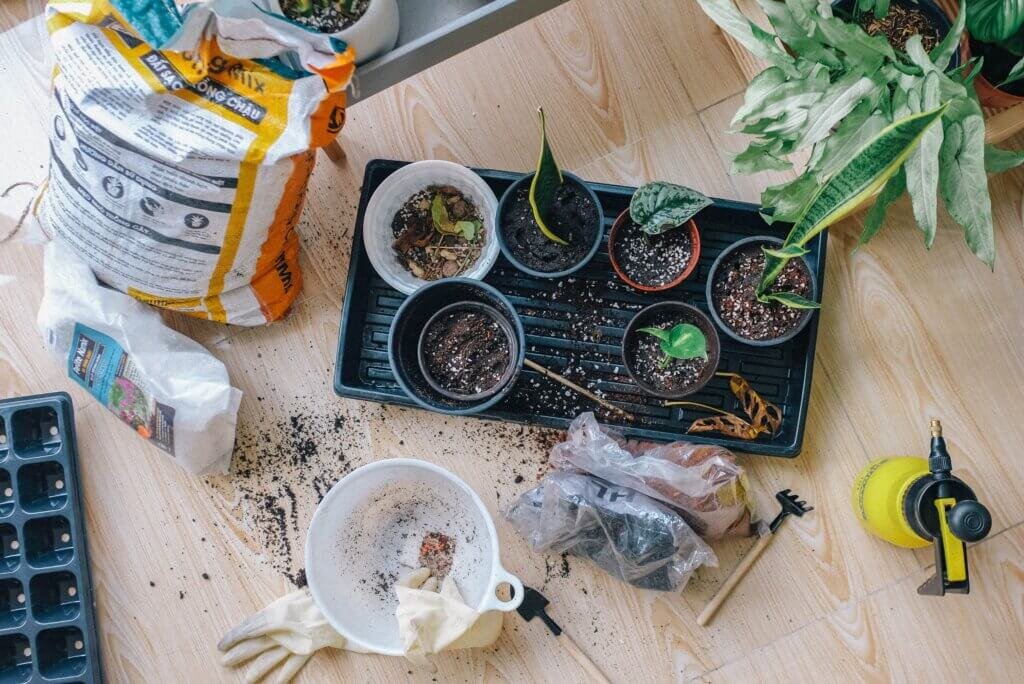
Build adequate garden structures
Terrace your garden
Terracing is a garden construction technique that involves creating level platforms on sloping terrain. By terracing your garden, you can create flat areas that help control water flow and prevent soil erosion. The flat platforms act as mini watersheds, allowing water to infiltrate the soil slowly and reducing the chances of runoff. Terracing not only helps with erosion control but also provides gardening space for growing a variety of plants.
Construct retaining walls
Retaining walls are sturdy structures made of materials such as stone, concrete, or timber, and they are designed to hold back soil on sloping areas. By building retaining walls in your garden, you can prevent soil erosion and create stable planting beds. These walls work by providing support to the soil, preventing it from being washed away during heavy rain or runoff. Retaining walls can significantly enhance the aesthetics of your garden while maintaining soil integrity.
Create windbreaks
Strong winds can be detrimental to soil health, leading to erosion and the loss of valuable topsoil. Creating windbreaks is an effective way to mitigate the impact of wind on your garden. Windbreaks act as barriers, reducing wind speed and redirecting airflow. Planting trees, shrubs, or hedges strategically can help create an effective windbreak. These structures not only protect against soil erosion but also create microclimates that can benefit your garden by reducing water evaporation and providing shade.
Install gabions or geotextiles
Gabions and geotextiles are engineered materials used in construction to stabilize soil and control erosion. Gabions are wire baskets filled with rocks, while geotextiles are permeable fabrics designed to reinforce soil and prevent erosion. Both gabions and geotextiles can be used effectively in your garden to prevent soil erosion in vulnerable areas. They provide additional support to the soil and help prevent runoff, ensuring that your garden soil remains intact.
Build check dams
Check dams are small structures built across drainages or swales to slow down the flow of water and prevent erosion. By constructing check dams, you can help retain water and sediment, allowing it to infiltrate the soil gradually. These structures are typically made of stone, timber, or concrete and are strategically placed to maximize their effectiveness. Check dams not only assist in erosion control but also promote the formation of small pools of water, facilitating groundwater recharge.
Practice responsible gardening techniques
Avoid excessive tilling
Tilling the soil too frequently or excessively can disrupt its structure, making it more susceptible to erosion. Instead, practice minimal tillage techniques to preserve the soil’s integrity. Minimizing tillage allows microorganisms, beneficial insects, and earthworms to thrive, enhancing soil health and structure. It also helps retain organic matter and reduces soil compaction, both of which play essential roles in preventing erosion.
Use organic fertilizers
Opting for organic fertilizers over synthetic ones not only benefits the environment but also aids in erosion prevention. Organic fertilizers, such as compost or manure, improve soil fertility and structure, promoting the growth of healthy plants with stronger root systems. These stronger root systems help anchor the soil, reducing the risk of erosion. Organic fertilizers also contribute to the long-term health of your garden by enriching the soil with essential nutrients and organic matter.
Compost regularly
Composting is a sustainable and effective way to improve soil quality, prevent erosion, and reduce waste. By composting your kitchen scraps, yard waste, and other organic matter, you can create nutrient-rich compost that enhances soil fertility and structure. Adding compost to your garden boosts organic matter content, improves water retention, and encourages beneficial microbial activity. A healthy, well-structured soil rich in organic matter is less prone to erosion, making regular composting an essential practice for erosion prevention.
Minimize use of pesticides and herbicides
Chemical pesticides and herbicides can harm beneficial insects and microorganisms in the soil, disrupting the delicate balance of your garden ecosystem. Overreliance on these chemicals can also lead to the depletion of organic matter and nutrient imbalances in the soil, making it more vulnerable to erosion. Whenever possible, opt for organic pest control methods or natural alternatives to minimize the use of harmful chemicals and protect the health of your soil.
Encourage beneficial insects
Beneficial insects play a vital role in maintaining soil health and preventing erosion. Ladybugs, bees, butterflies, and other pollinators contribute to the overall health of your garden by aiding in the pollination process and controlling harmful pests. By creating a welcoming habitat for these beneficial insects, such as planting native flowering plants and avoiding the use of chemical pesticides, you can promote a balanced ecosystem in your garden. This balanced ecosystem, in turn, helps maintain healthy soil and reduces the risk of erosion.
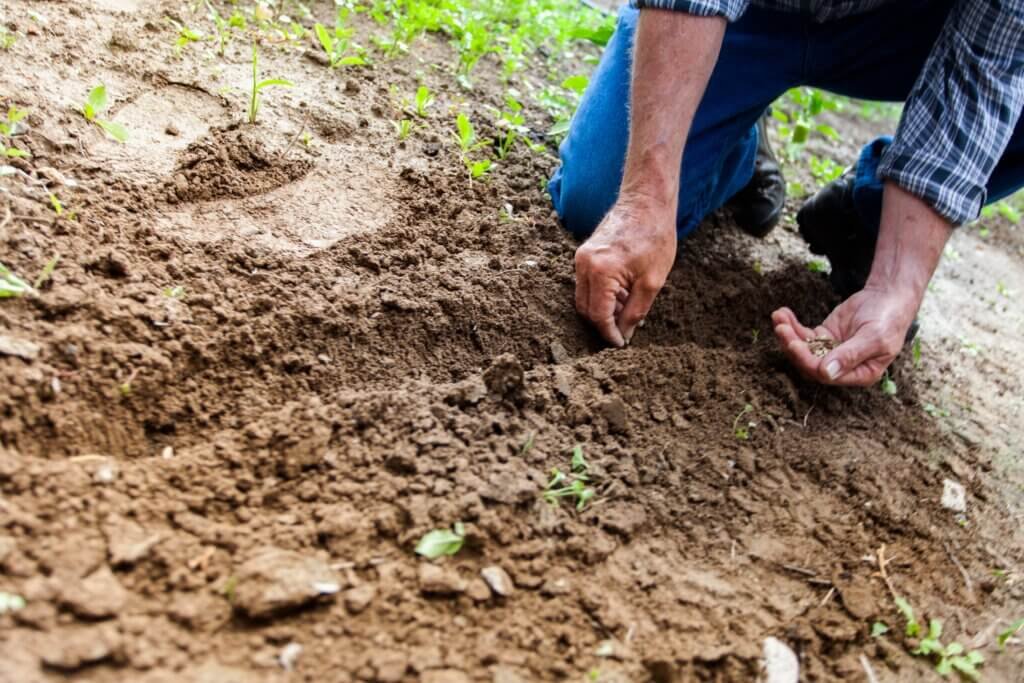
Promote healthy soil
Add organic matter
One of the best ways to promote healthy soil is by adding organic matter regularly. Organic matter, such as compost or well-rotted manure, enriches the soil with essential nutrients, improves its structure, and promotes moisture retention. This helps create a fertile environment where plants can thrive and roots can anchor the soil, reducing erosion risks. Adding organic matter also encourages beneficial microbial activity, enhancing soil health and overall garden productivity.
Ensure proper soil pH
Maintaining the correct soil pH is crucial for healthy plant growth and erosion prevention. Different plants thrive in different pH levels, so it’s essential to test and adjust your soil’s pH accordingly. Most plants prefer a slightly acidic to neutral pH range of 6.0 to 7.0. If your soil’s pH is too acidic or alkaline, certain nutrients become less available to plants, leading to weaker root systems and increased erosion risks. Regular pH testing and appropriate soil amendments can help create an optimal environment for plant growth and erosion prevention.
Practice crop rotation
Crop rotation is not only beneficial for nutrient management but also helps prevent soil erosion. By rotating your crops, you can disrupt pest and disease cycles, reducing the need for chemical interventions that can harm soil health. Different crops have varying root systems and nutrient demands, and rotating them allows for a more balanced nutrient distribution. This, in turn, enhances soil structure and reduces erosion risks by improving root penetration and nutrient availability.
Limit soil disturbance
Excessive soil disturbance, such as deep tilling or frequent digging, can disrupt the soil structure and expose it to erosion. To minimize soil disturbance, opt for practices such as no-till gardening or raised bed gardening. No-till gardening involves leaving the soil undisturbed, allowing it to maintain its natural structure and integrity. Raised bed gardening provides a controlled environment where the soil is not compacted or disturbed as much. By limiting soil disturbance, you protect its structure and reduce erosion risks.
Avoid compacting the soil
Soil compaction can happen due to heavy foot traffic or the use of heavy machinery, leading to reduced pore spaces and poor drainage. Compacted soil is more prone to erosion as water cannot infiltrate properly and runoff becomes more likely. To prevent soil compaction, avoid walking on garden beds when the soil is wet or use stepping stones to distribute weight. Additionally, practicing mulching and planting cover crops can help maintain a loose, well-aerated soil structure and prevent erosion.
Establish proper drainage
Improve soil structure
Good soil structure is essential for proper drainage and erosion prevention. If your soil has a clay-like texture, it tends to hold water and drain slowly, increasing the risk of erosion. To improve soil structure, incorporate organic matter such as compost or well-rotted manure. These additions help break up clay particles, allowing for better water infiltration and drainage. Regularly aerating the soil using gardening forks or mechanical aerators can also help improve soil structure and prevent compaction.
Use contour plowing
Contour plowing is a technique used to cultivate crops parallel to the natural contours or slopes of the land. By plowing along the contour lines, water is channeled more effectively, reducing runoff and erosion. This method allows water to infiltrate the soil gradually and prevents it from carrying away valuable topsoil. Contour plowing is particularly useful on sloping landscapes, where it can significantly reduce erosion risks and protect the integrity of your garden soil.
Create terraces
Terracing is an effective technique for managing water runoff and preventing erosion on steep slopes. By creating level platforms or steps, you can slow down the flow of water and provide a series of flat areas for planting. Terraces help reduce erosion by allowing water to infiltrate the soil slowly instead of causing runoff. They provide a valuable opportunity to establish vegetation, such as ground cover plants or erosion control blankets, that can further protect the soil from erosion and stabilize the terrace structure.
Construct French drains
French drains are trenches filled with gravel or rock and lined with perforated pipes that collect and redirect excess water away from your garden. By installing French drains in areas prone to excessive water accumulation, you can prevent soil erosion and ensure proper drainage. French drains help redirect water to more suitable locations, reducing the risk of soil saturation and erosion. They are particularly useful in areas with heavy clay soils or high water tables.
Design proper garden slopes
When designing your garden, it is essential to consider the slope and contour of the land. Properly designed garden slopes can help control water flow and prevent erosion. Gradual slopes with longer distances and gentle gradients are less prone to erosion as they allow water to infiltrate the soil gradually. Avoid steep slopes or unnecessary disturbances to the existing land contours, as these can increase the risk of runoff and erosion. By designing proper slopes, you can minimize erosion and protect your garden soil.
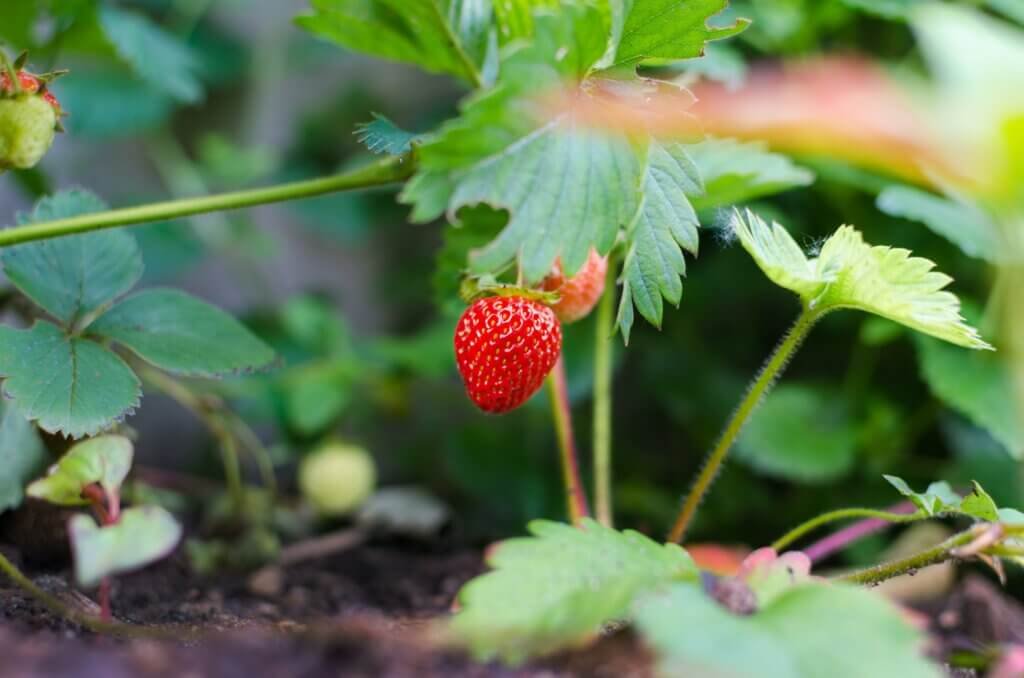
Manage runoff and erosion
Install gutters and downspouts
Gutters and downspouts are essential for managing roof runoff and preventing it from causing erosion in your garden. By installing gutters along the eaves of your house and connecting them to downspouts, you can collect rainwater and direct it away from your garden beds. This prevents excessive water from flowing directly onto your garden, reducing the risk of erosion. Consider directing the downspouts towards permeable surfaces or rain gardens to further promote water infiltration.
Channel rainwater away from the garden
Properly channeling rainwater away from your garden is crucial for erosion prevention. If your garden is located in a naturally low-lying area or receives significant runoff from surrounding areas, consider creating swales or ditches to redirect water. These swales or ditches should be designed to capture and slow down the flow of water, allowing it to infiltrate the soil gradually. Combined with appropriate vegetation, such as grass or ground cover plants, these features can effectively manage rainwater and reduce the risk of erosion.
Plant vegetation in swales
Swales are an effective way to manage rainwater runoff and prevent erosion. Consider planting suitable vegetation, such as grasses or native plants, in swales to help stabilize the soil and further minimize erosion risks. The plant roots act as anchors, holding the soil in place and reducing the impact of runoff. Native plants are particularly beneficial as they are adapted to the local climate and can thrive in the specific conditions of the swale.
Use erosion control blankets
Erosion control blankets, also known as erosion control mats or coir blankets, are temporary coverings made of natural fibers or synthetic materials. These blankets are anchored to the soil and help hold it in place until vegetation establishes. Erosion control blankets are especially useful on vulnerable slopes or areas with exposed soil, as they provide immediate protection against erosion. They allow water and air to penetrate the soil while preventing excessive runoff and reducing erosion risks.
Apply jute netting
Jute netting is a biodegradable mesh made from natural jute fibers. It is an excellent erosion control measure that can be used in your garden to prevent soil erosion on slopes or bare areas. By installing jute netting, you provide temporary stability and hold the soil together, reducing the chances of erosion. The netting acts as a protective layer, allowing vegetation to take root and stabilize the slope over time. Jute netting is an environmentally friendly option that decomposes naturally, making it an ideal choice for erosion control.
Maintain ground cover
Avoid bare soil
Leaving bare soil exposed in your garden increases the risk of erosion, as it is more susceptible to the erosive impact of rainfall and runoff. Bare soil lacks the protection provided by vegetation, making it prone to erosion and nutrient loss. To prevent erosion, make sure to cover bare soil with organic mulch or plant suitable ground cover plants. These practices help maintain soil integrity, reduce water runoff, and enhance the overall health of your garden.
Use cover crops
Cover crops are plants grown between main crops to cover the soil during periods of non-production or to protect against erosion. These crops, such as winter rye, clover, or vetch, help hold the soil in place and add organic matter when incorporated back into the soil. Cover crops improve soil structure, reduce erosion risks, and contribute to overall soil health. They are particularly beneficial during fall and winter months when the garden is not in active production.
Plant grass or lawn areas
Grass or lawn areas are excellent options for ground cover in your garden. Grasses have extensive root systems that help anchor the soil, preventing erosion. Planting grass or maintaining a lawn in your garden provides a protective layer that reduces water runoff and stabilizes the soil. Regular mowing and proper lawn care practices ensure a healthy grass cover that enhances soil stability and minimizes erosion risks.
Add garden mulch
Applying garden mulch not only helps conserve moisture but also acts as a protective layer against erosion. Different types of mulch, such as wood chips, straw, or shredded bark, can be used to cover the soil surface in your garden beds. Mulch helps reduce water runoff, retain moisture, and regulate soil temperature. Additionally, it prevents direct rainfall impact, allowing water to infiltrate the soil slowly and reducing the chances of erosion. Regularly replenishing mulch helps maintain soil integrity and minimizes erosion risks.
Utilize ground cover plants
Strategically planting ground cover plants in your garden is an effective way to prevent erosion. Ground cover plants, such as vinca, hostas, or creeping phlox, spread across the soil surface, forming a dense cover that protects against erosion. These plants have shallow root systems that help stabilize the soil and provide essential habitat for beneficial insects and microorganisms. Ground cover plants also add aesthetic value to your garden, enhancing its overall appearance.
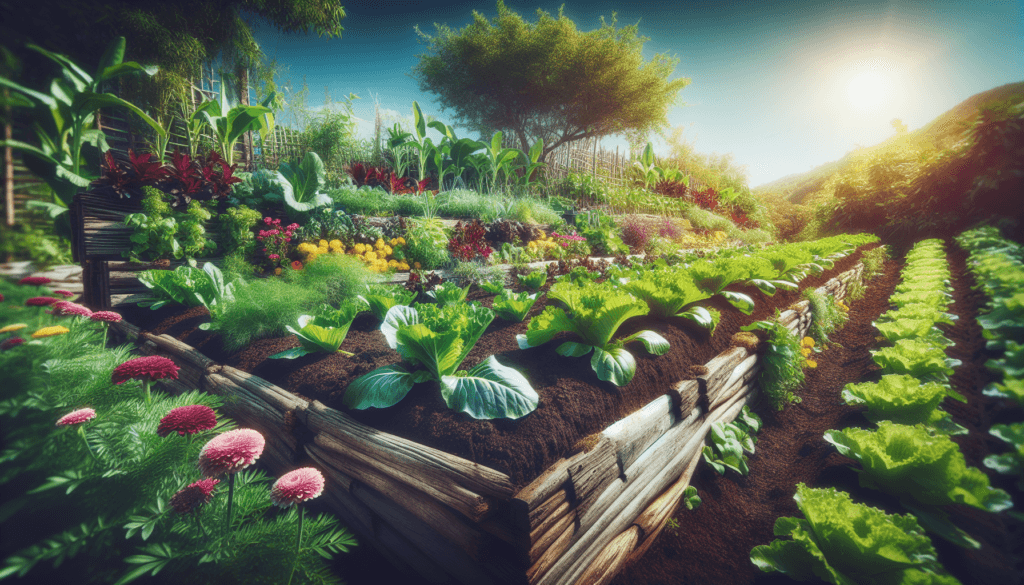
Prevent wind erosion
Plant windbreaks or shelterbelts
Windbreaks, also known as shelterbelts, are rows of tall trees or shrubs planted to create a barrier that reduces wind speed and prevents erosion. By planting windbreaks on the windward side of your garden, you can protect your plants and soil from the damaging effects of strong winds. Trees such as cypress, cedar, or spruce are commonly used for this purpose. Windbreaks not only reduce wind erosion but also provide shade and create a more favorable microclimate for your garden.
Use wind fences or barriers
In addition to windbreaks, using wind fences or barriers can further protect your garden from wind erosion. Wind fences are solid structures made of sturdy materials like wood or metal placed strategically to create a wind-blocking effect. This helps reduce wind speed and redirect airflow, minimizing the erosive impact on your garden soil. Wind barriers can be temporary or permanent structures, depending on your needs, and are particularly useful for protecting individual beds or sensitive plants from wind erosion.
Create microclimates
Creating microclimates within your garden can help prevent wind erosion and provide optimal growing conditions for your plants. Microclimates are small areas within your garden that have different environmental conditions compared to the surrounding area. By using windbreaks, shade structures, or planting beds in strategic locations, you can create sheltered areas that reduce wind exposure and the risk of erosion. These microclimates also help regulate temperature and humidity, benefiting both your garden and the surrounding ecosystem.
Utilize hedgerows
Hedgerows are dense rows of shrubs, trees, and perennial plants that serve as living fences or windbreaks. By incorporating hedgerows into your garden design, you can effectively reduce wind speed, disperse airflow, and prevent erosion. Hedgerows also provide habitat for wildlife, attract pollinators, and contribute to the overall biodiversity of your garden. When selecting plants for hedgerows, choose native species that are adapted to the local climate and can provide long-term benefits.
Install windbreak trees
Planting specific tree species known as windbreak trees is an effective way to prevent wind erosion. Windbreak trees have sturdy and deep root systems that help anchor the soil and resist wind forces. Species such as willow, oak, or Norway spruce are commonly used as windbreak trees due to their resilience and ability to withstand strong winds. Properly spaced and strategically planted windbreak trees provide valuable protection against wind erosion and help create a more stable garden environment.
Monitor and address erosion signs
Check for gullies and rills
Gullies and rills are signs of severe erosion and indicate that immediate action is needed. Gullies are deep channels formed by intense water flow, while rills are smaller, shallow grooves. If you notice gullies or rills in your garden, it is important to address them promptly to prevent further soil erosion. Techniques such as filling in gullies with soil or redirecting water flow can help restore your garden’s integrity and prevent future erosion.
Look for exposed tree roots
Exposed tree roots are an indication that erosion is occurring and soil stability is compromised. Erosion can expose tree roots and weaken their hold, leading to the potential collapse of trees or plants. If you notice exposed tree roots in your garden, it is crucial to take immediate action. Consider implementing erosion control measures such as adding mulch, creating terraces, or planting ground cover to protect the exposed roots and prevent further erosion.
Notice puddling or ponding
Puddling or ponding of water in your garden is a clear sign of poor drainage and potential erosion. These stagnant water areas not only hinder plant growth but also increase the risk of soil erosion and nutrient loss. Addressing puddling or ponding involves improving soil structure, creating proper drainage, or redesigning garden slopes. By promoting better water infiltration and preventing water accumulation, you can reduce erosion risks and ensure a healthier garden environment.
Observe soil compaction
Soil compaction is a common issue that can lead to erosion. Compacted soil has reduced pore space, making it less permeable to water and more prone to runoff. If you notice compacted areas in your garden, it is important to address them to prevent erosion. Techniques such as aerating the soil, adding organic matter, or reducing foot traffic can help alleviate soil compaction, improve drainage, and reduce erosion risks.
Spot vegetation loss
Vegetation loss or bare patches in your garden can indicate erosion problems. When soil erodes, it can carry away valuable topsoil along with the vegetation growing on it. If you notice areas in your garden where plants are struggling or have completely disappeared, it is a clear sign of erosion. Address the underlying erosion issue by implementing appropriate erosion control measures such as mulching, planting ground cover, or creating structural features to stabilize the soil and protect your garden from further erosion.
